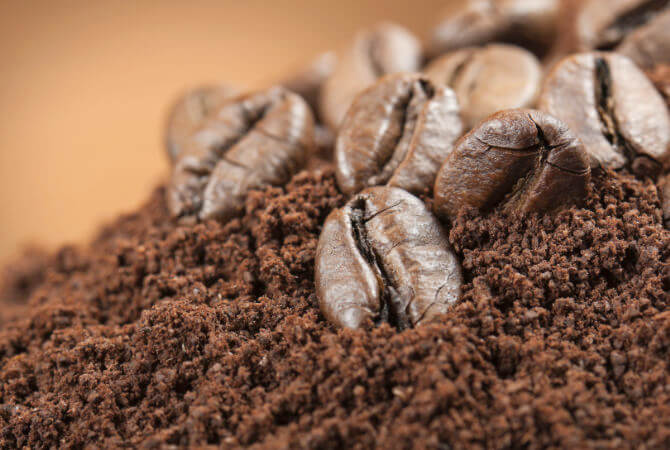
Coffee enthusiasts often find themselves navigating the complex world of coffee beans, with Arabica and Robusta being the two most commonly discussed varieties. Each type offers unique characteristics, flavours, and benefits, catering to different tastes and preferences. This blog post delves into the differences between Arabica and Robusta coffee, helping you understand what sets them apart and how to choose the right one for your coffee experience.
Origins and Cultivation
Arabica Coffee
- Origin: Arabica coffee, scientifically known as Coffea arabica, originated in the highlands of Ethiopia. It is now primarily grown in Latin America, Eastern Africa, and Asia.
- Cultivation: Arabica beans are typically grown at higher altitudes, between 600 to 2000 meters above sea level. They require a cooler climate, ample rainfall, and rich soil to thrive. These conditions contribute to their complex flavour profile.
Robusta Coffee
- Origin: Robusta coffee, or Coffea canephora, is native to Central and Western Africa. It is now widely grown in Africa, Southeast Asia, and Brazil.
- Cultivation: Robusta beans are more resilient and can be cultivated at lower altitudes, from sea level up to 600 meters. They are less susceptible to pests and diseases, making them easier and cheaper to produce. Robusta plants thrive in hot climates with irregular rainfall.
Flavour Profile
Arabica Coffee
- Taste: Arabica coffee is known for its smooth, mild flavour and higher acidity. It often features a range of complex and nuanced flavours, including fruity, floral, and sweet notes. The acidity in Arabica coffee gives it a bright, tangy taste.
- Aroma: Arabica beans generally have a stronger, more pleasant aroma, often described as fragrant or floral.
Robusta Coffee
- Taste: Robusta coffee has a stronger, harsher taste compared to Arabica. It is known for its earthy, nutty, and sometimes bitter flavours. The higher caffeine content in Robusta beans contributes to their more robust and astringent taste.
- Aroma: The aroma of Robusta coffee is less pronounced and often described as woody or grainy.
Caffeine Content
- Arabica: Arabica beans contain about 1.5% caffeine by weight, which contributes to their milder flavour.
- Robusta: Robusta beans have a higher caffeine content, around 2.7%, making them more bitter and giving them a stronger kick.
Appearance and Composition
- Arabica Beans: These beans are generally oval-shaped with a curved crease. They have a smoother, more refined appearance.
- Robusta Beans: Robusta beans are rounder and smaller, with a straight crease. They are denser and have a higher concentration of chlorogenic acids, which can contribute to their bitter taste.
Uses and Applications
Arabica Coffee
Arabica is the preferred choice for specialty coffees and premium blends. Its complex flavour profile makes it ideal for various brewing methods, including pour-over, French press, and espresso. Arabica beans are often used in single-origin coffees, highlighting the unique characteristics of specific regions.
Robusta Coffee
Robusta is commonly used in instant coffee, espresso blends, and as a filler in lower-quality coffee blends. Its higher caffeine content and crema-producing properties make it a popular choice for espresso, especially in Italian-style espresso blends.
Price and Availability
- Arabica: Due to its higher cultivation costs and delicate nature, Arabica coffee is generally more expensive. It is also more widely available in specialty coffee shops and high-end retailers.
- Robusta: Robusta coffee is more affordable and easier to find in supermarkets and mass-market coffee brands. Its lower production costs make it a cost-effective option for budget-conscious consumers.
Conclusion
Choosing between Arabica and Robusta coffee ultimately comes down to personal preference and desired coffee experience. If you enjoy a smooth, complex, and aromatic cup of coffee, Arabica is the way to go. On the other hand, if you prefer a stronger, more robust flavour with a higher caffeine kick, Robusta might be your best bet.
Understanding the differences between these two coffee varieties can help you make an informed decision and enhance your appreciation for the diverse world of coffee. Whether you’re a casual coffee drinker or a dedicated aficionado, exploring both Arabica and Robusta can provide a richer and more rewarding coffee experience.
For more information on coffee varieties and brewing tips, visit Specialty Coffee Association and Perfect Daily Grind.
Sources
- Specialty Coffee Association – SCA Website
- Perfect Daily Grind – Perfect Daily Grind
- National Coffee Association – NCA Website



